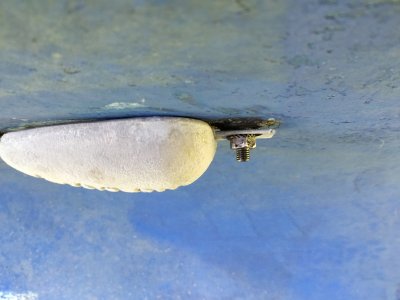zimbo
New member
I have today replaced the anode on my motor cruiser (moored and only used on the non-tidal Thames, so "freshwater").
On fitting it, there is a problem - see photo. The fixing brackets on the new anode are not flush with the bottom of the anode, whereas they were on the worn anode I removed. The new anode is a genuine MG Duff product.
The problem is that on tightening the nuts and getting the anode base flush and tight to the hull, there is a gap of about 5 mm between the underneath of each bracket and the hull (which is GRP).
This strikes me as a potential 'disaster' in waiting when sailing along: all sorts of debris could get caught in the forward gap (and maybe the rear somehow) and it would be impossible (I think) to be able to remove this when the boat is back in the water for the season (my boat is craned out of the river over winter).
I think I need to fill these gaps before craning back in to create a smooth profile so that nothing can get caught up whilst sailing.
Anyone had a similar problem and/or got any suggestions as to what I can use to achieve this? Obviously needs to be waterproof but I'm not sure what will permanently stick (and stay in place) on the metal brackets and the anti-fouled GRP hull.
On fitting it, there is a problem - see photo. The fixing brackets on the new anode are not flush with the bottom of the anode, whereas they were on the worn anode I removed. The new anode is a genuine MG Duff product.
The problem is that on tightening the nuts and getting the anode base flush and tight to the hull, there is a gap of about 5 mm between the underneath of each bracket and the hull (which is GRP).
This strikes me as a potential 'disaster' in waiting when sailing along: all sorts of debris could get caught in the forward gap (and maybe the rear somehow) and it would be impossible (I think) to be able to remove this when the boat is back in the water for the season (my boat is craned out of the river over winter).
I think I need to fill these gaps before craning back in to create a smooth profile so that nothing can get caught up whilst sailing.
Anyone had a similar problem and/or got any suggestions as to what I can use to achieve this? Obviously needs to be waterproof but I'm not sure what will permanently stick (and stay in place) on the metal brackets and the anti-fouled GRP hull.

